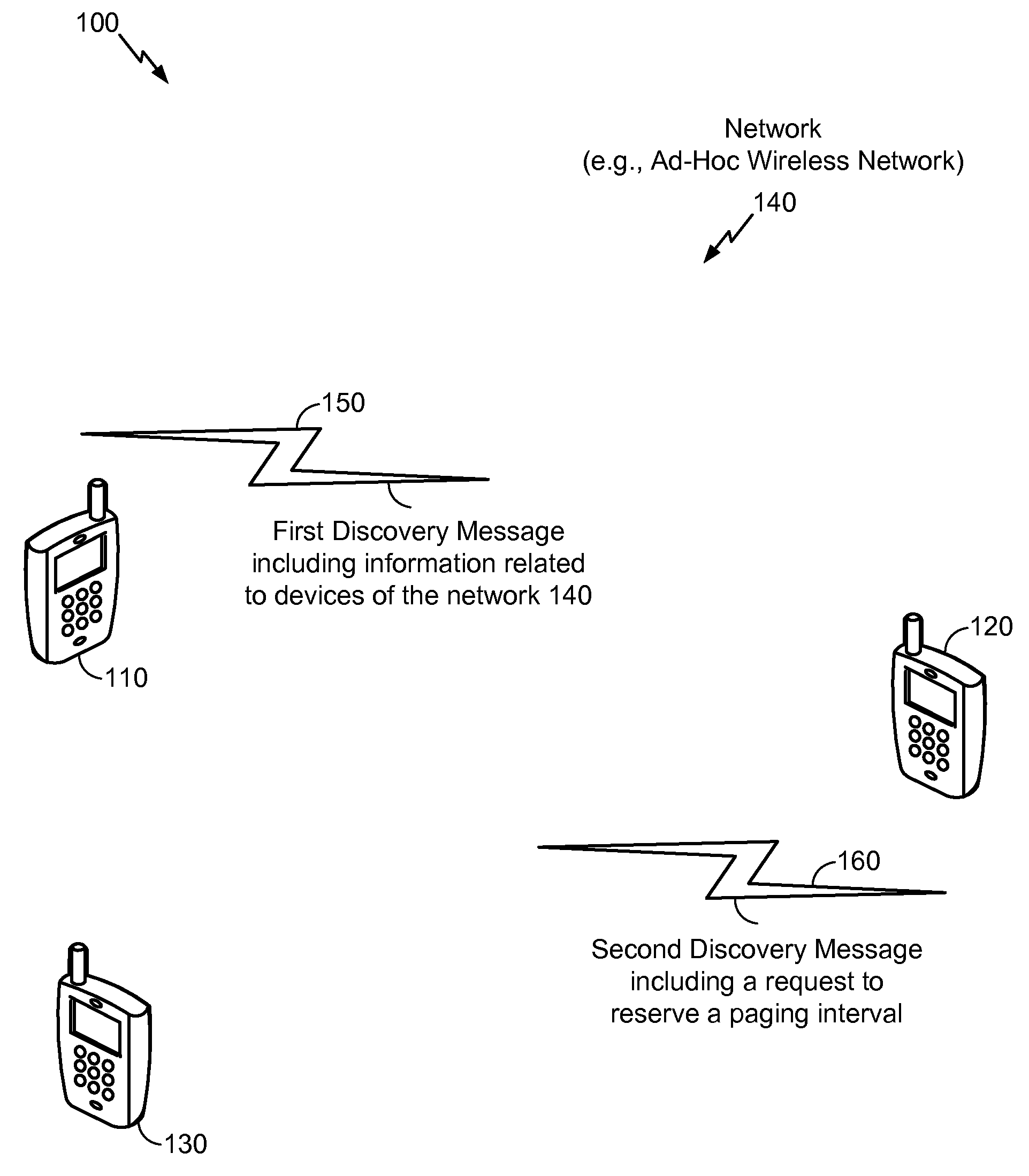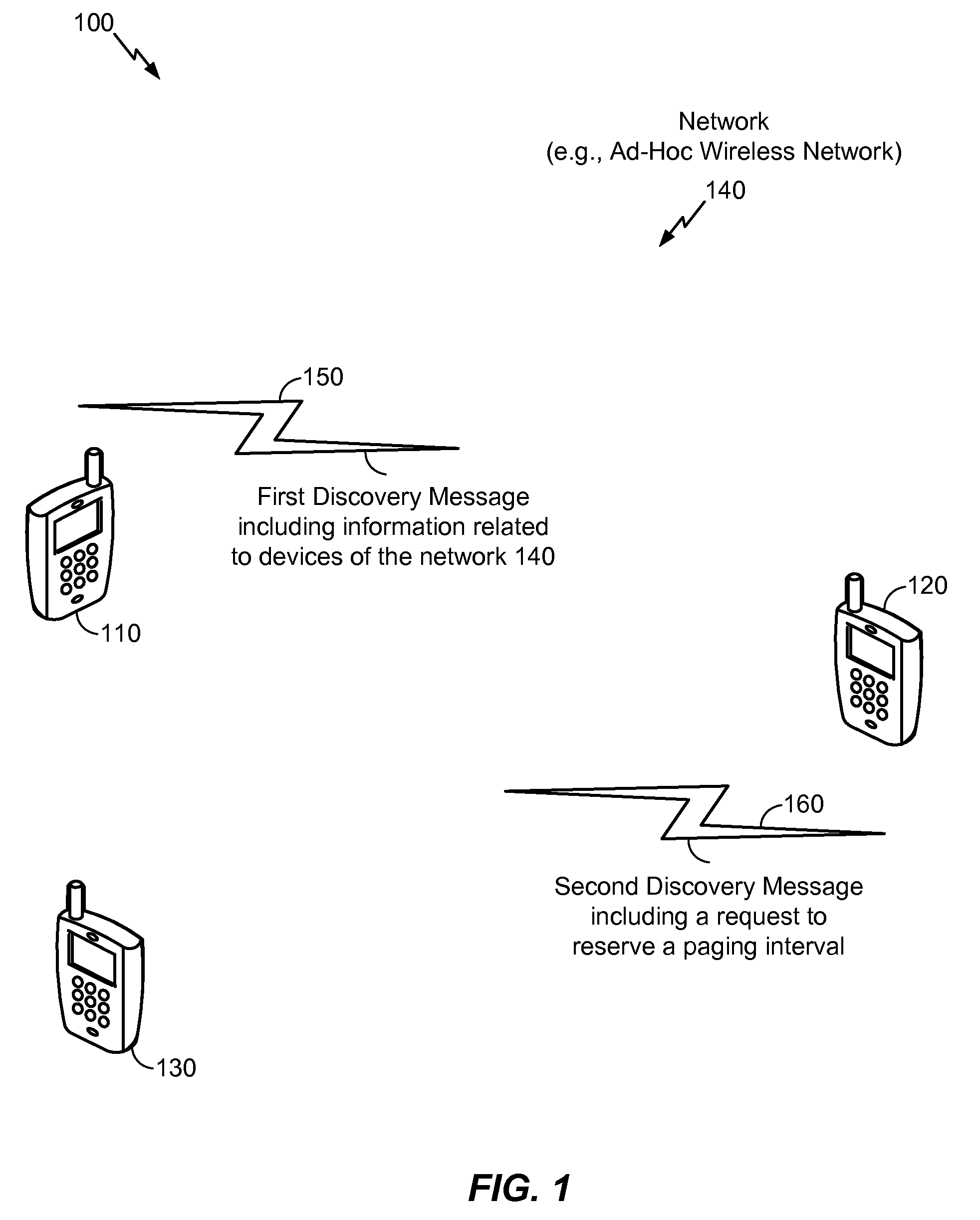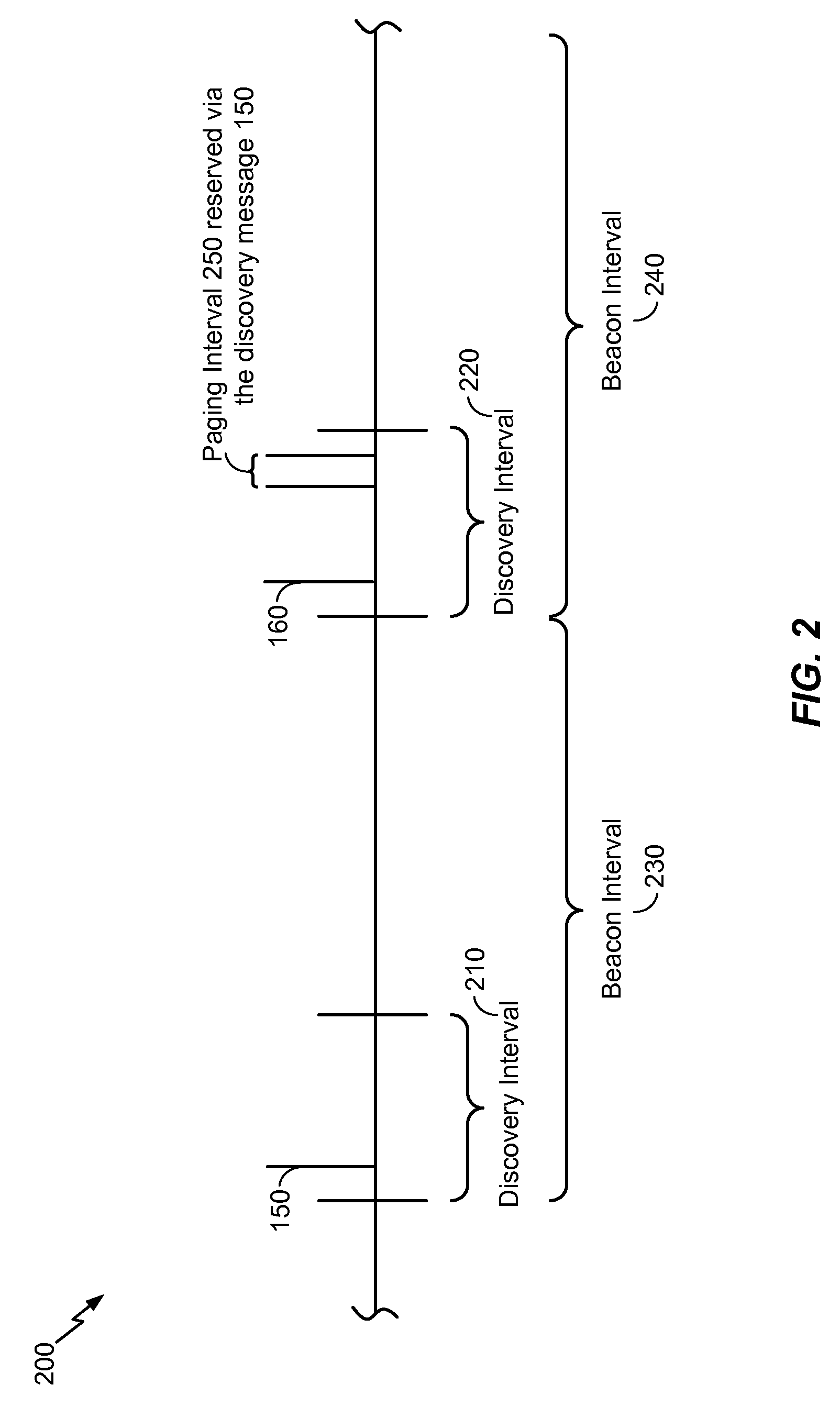Devices and methods for beacon communication in ad-hoc networks
a technology of ad-hoc networks and devices, applied in the field of ad-hoc networks, can solve the problems of affecting the use of wireless devices, affecting the creation and maintenance of decentralized wireless networks, and further frustration of users
- Summary
- Abstract
- Description
- Claims
- Application Information
AI Technical Summary
Benefits of technology
Problems solved by technology
Method used
Image
Examples
Embodiment Construction
[0046]Referring to FIG. 1, a particular illustrative embodiment of a plurality of devices of a network 140 is disclosed and generally designated 100. As illustrated in the particular example of FIG. 1, the plurality of devices includes a first device 110, a second device 120, and a third device 130, which may be wireless communication devices. The network 140 may be an ad-hoc wireless network in which the devices (e.g., the first device 110, the second device 120, the third device 130, or a combination thereof) may join and leave the network 140 dynamically. In at least one embodiment, each of the plurality of devices joins or leaves the network 140 based in part on discovery messages (e.g., beacons) associated with the network 140, such as a first discovery message 150 and a second discovery message 160, that “advertise” the network 140.
[0047]According to a particular illustrative embodiment, the first device 110 may send the first discovery message 150 during a first discovery int...
PUM
 Login to View More
Login to View More Abstract
Description
Claims
Application Information
 Login to View More
Login to View More - R&D
- Intellectual Property
- Life Sciences
- Materials
- Tech Scout
- Unparalleled Data Quality
- Higher Quality Content
- 60% Fewer Hallucinations
Browse by: Latest US Patents, China's latest patents, Technical Efficacy Thesaurus, Application Domain, Technology Topic, Popular Technical Reports.
© 2025 PatSnap. All rights reserved.Legal|Privacy policy|Modern Slavery Act Transparency Statement|Sitemap|About US| Contact US: help@patsnap.com



